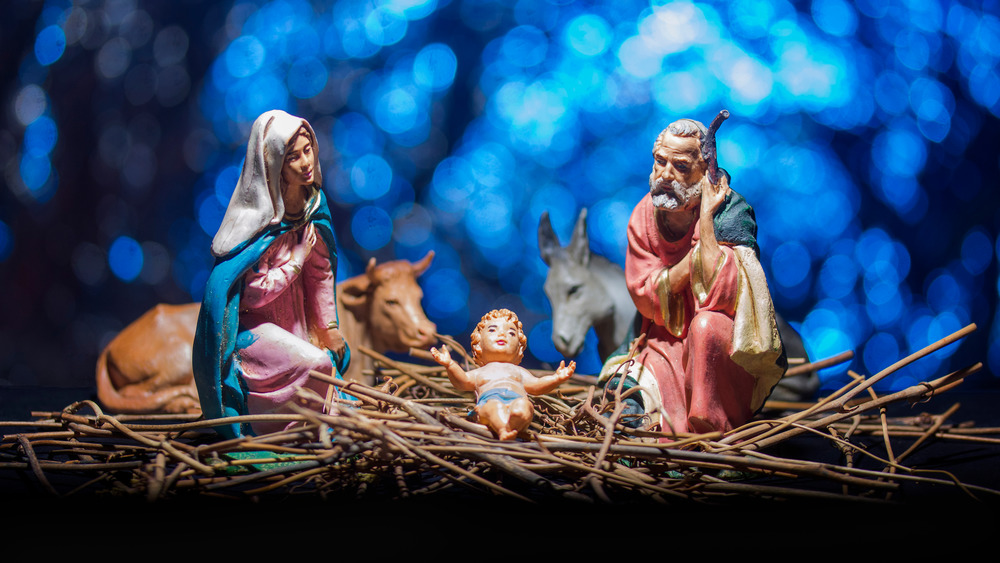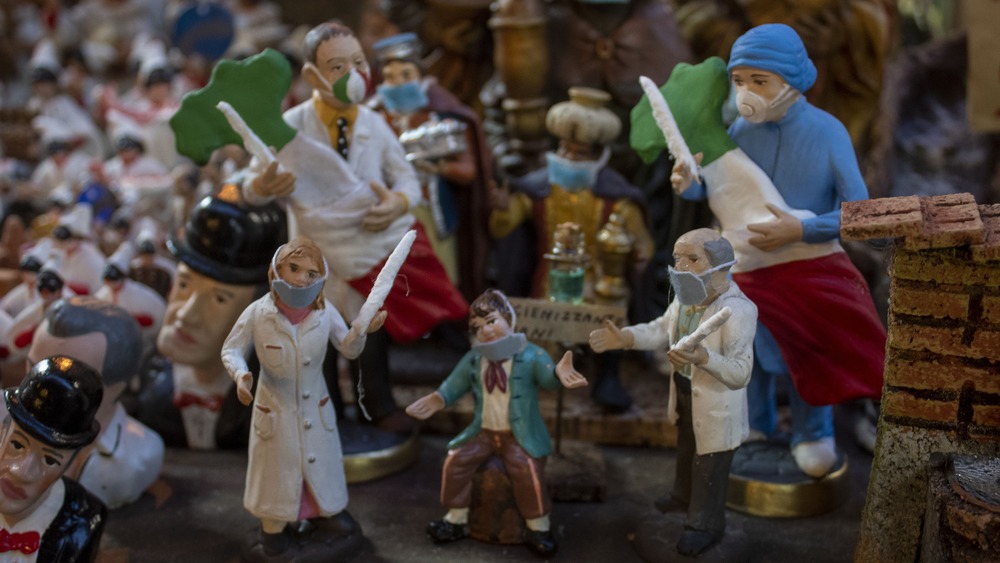Nativity Scenes Are Older Than You Think
For some people, Christmas is a time when families gather to give gifts, eat food, and see Santa. But, the whole reason most people — and by that we mean mainly Christians — celebrate Christmas is to commemorate when Jesus Christ was born.
If you've ever seen a nativity scene outside of a church during Christmas service, then you no doubt know what it looks like. There's Mary, Joseph, and baby Jesus surrounded by animals and an angel. Sometimes the three wise men make an appearance. The nativity scene is a staple of many towns, often with people (mainly kids) dressing up for their school Christmas concerts. Many people collect them too, CBS reported, with some nativity scenes taking over every surface in the house.
But how did a nativity scene even come about? As far as we know, no one painted the scene when Jesus was born in a manger. Nor is the nativity scene a modern invention, used to remind people what the holiday is all about in the first place.
The nativity scene was born from the mind of St. Francis of Assisi. According to Slate, quoting from St. Bonaventure's biography of Francis, St. Francis sought permission from Pope Honorious III in 1233 to set up a scene during a sermon. He wanted to deliver his sermon with a manger behind him, complete with hay and live animals. St. Francis invited the people of the town of Grecio to witness the scene behind him as he preached about "the babe of Bethlehem."
The first nativity scene featured miraculous hay
The first nativity scene, at least based on Bonaventure's account, served as more than just a prop to talk about the birth of Jesus. The Conversation wrote that during the sermon, a doll placed in the scene began crying as if it was alive — right after St. Francis held it in his arms. The miracle purportedly didn't stop there: The hay from the manger was said to have healed sick animals and protected people from sickness.
From then on, nativity scenes became popular. U.S. Catholic explains that Franciscan monks soon adopted the practice, using live animals and actors, which then spread to the rest of Europe. These scenes were often localized, with people portraying local characters, a practice that still happens today with varying degrees of success (an Italian town used the likeness of Italian Prime Minister Silvio Berlusconi).
By the 19th century, even Protestants began setting up nativity scenes. Protestant churches at first rejected the nativity scene because it was too close to idolatry. Of course, the nativity scenes we see are not totally Biblically accurate, per Smithsonian Magazine. Technically, the three wise men aren't supposed to be involved because they arrived a month after Jesus' birth. The wise men and the shepherds didn't even appear together in the Bible. But, don't worry, the Church allows for artistic interpretation. That's why the nativity scene in Love Actually had a lobster.
Today's nativity scenes won't heal the sick, but they serve as a reminder that Christmas isn't all about Santa Claus and his many presents.

